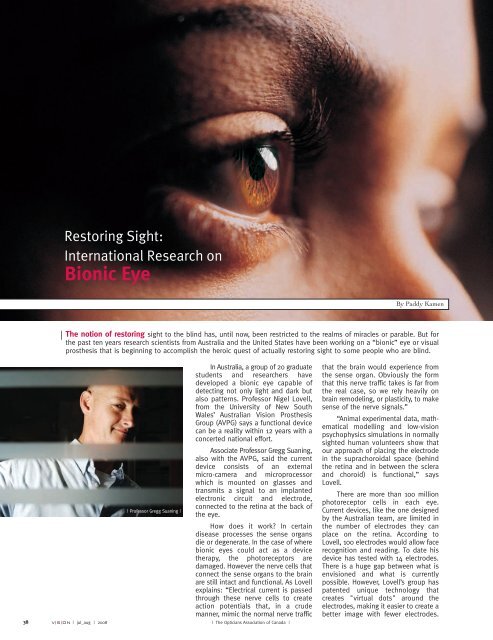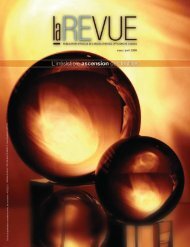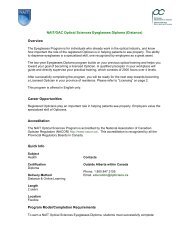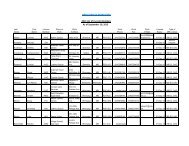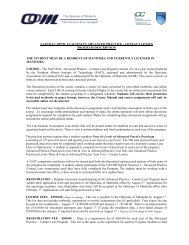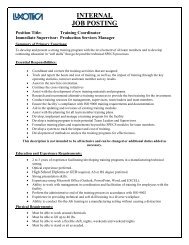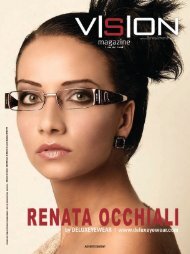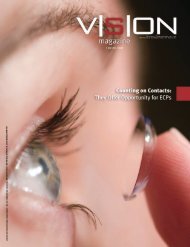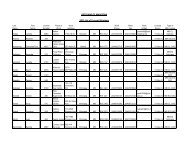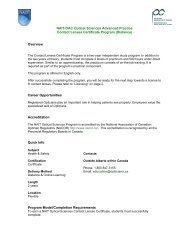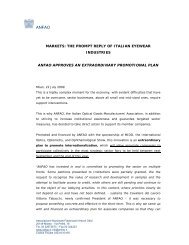Bionic Eye
Bionic Eye
Bionic Eye
Create successful ePaper yourself
Turn your PDF publications into a flip-book with our unique Google optimized e-Paper software.
38<br />
|<br />
Restoring Sight:<br />
International Research on<br />
<strong>Bionic</strong> <strong>Eye</strong><br />
The notion of restoring sight to the blind has, until now, been restricted to the realms of miracles or parable. But for<br />
the past ten years research scientists from Australia and the United States have been working on a “bionic” eye or visual<br />
prosthesis that is beginning to accomplish the heroic quest of actually restoring sight to some people who are blind.<br />
| Professor Gregg Suaning |<br />
In Australia, a group of 20 graduate<br />
students and researchers have<br />
developed a bionic eye capable of<br />
detecting not only light and dark but<br />
also patterns. Professor Nigel Lovell,<br />
from the University of New South<br />
Wales’ Australian Vision Prosthesis<br />
Group (AVPG) says a functional device<br />
can be a reality within 12 years with a<br />
concerted national effort.<br />
Associate Professor Gregg Suaning,<br />
also with the AVPG, said the current<br />
device consists of an external<br />
micro-camera and microprocessor<br />
which is mounted on glasses and<br />
transmits a signal to an implanted<br />
electronic circuit and electrode,<br />
connected to the retina at the back of<br />
the eye.<br />
How does it work? In certain<br />
disease processes the sense organs<br />
die or degenerate. In the case of where<br />
bionic eyes could act as a device<br />
therapy, the photoreceptors are<br />
damaged. However the nerve cells that<br />
connect the sense organs to the brain<br />
are still intact and functional. As Lovell<br />
explains: “Electrical current is passed<br />
through these nerve cells to create<br />
action potentials that, in a crude<br />
manner, mimic the normal nerve traffic<br />
VISION | jul_aug | 2008 | The Opticians Association of Canada |<br />
By Paddy Kamen<br />
that the brain would experience from<br />
the sense organ. Obviously the form<br />
that this nerve traffic takes is far from<br />
the real case, so we rely heavily on<br />
brain remodeling, or plasticity, to make<br />
sense of the nerve signals.”<br />
“Animal experimental data, mathematical<br />
modelling and low-vision<br />
psychophysics simulations in normally<br />
sighted human volunteers show that<br />
our approach of placing the electrode<br />
in the suprachoroidal space (behind<br />
the retina and in between the sclera<br />
and choroid) is functional,” says<br />
Lovell.<br />
There are more than 100 million<br />
photoreceptor cells in each eye.<br />
Current devices, like the one designed<br />
by the Australian team, are limited in<br />
the number of electrodes they can<br />
place on the retina. According to<br />
Lovell, 100 electrodes would allow face<br />
recognition and reading. To date his<br />
device has tested with 14 electrodes.<br />
There is a huge gap between what is<br />
envisioned and what is currently<br />
possible. However, Lovell’s group has<br />
patented unique technology that<br />
creates "virtual dots" around the<br />
electrodes, making it easier to create a<br />
better image with fewer electrodes.


